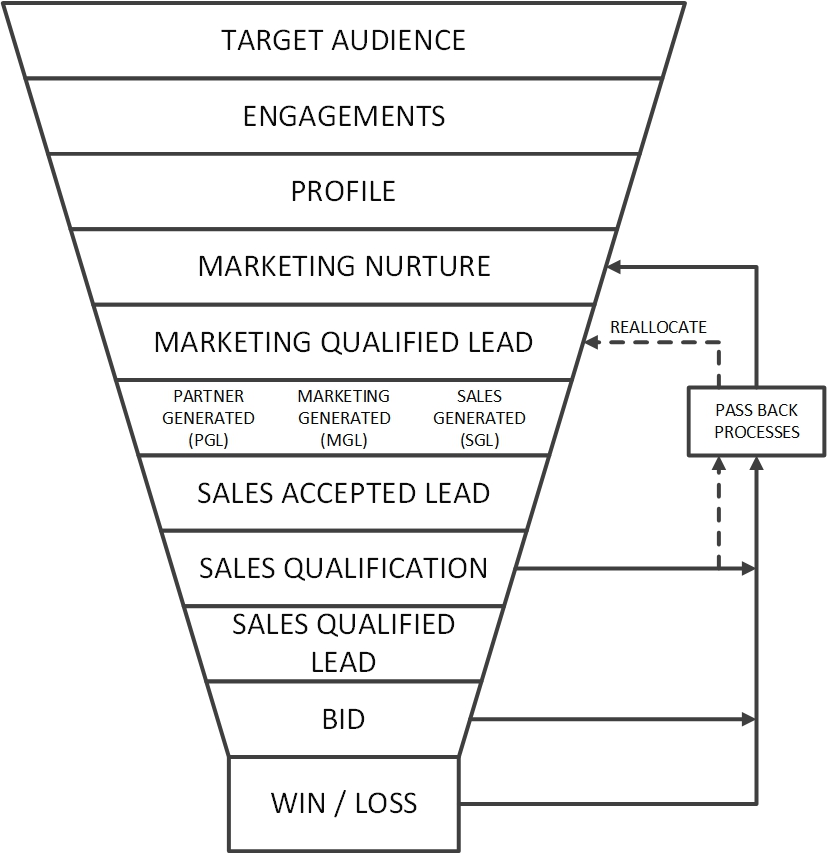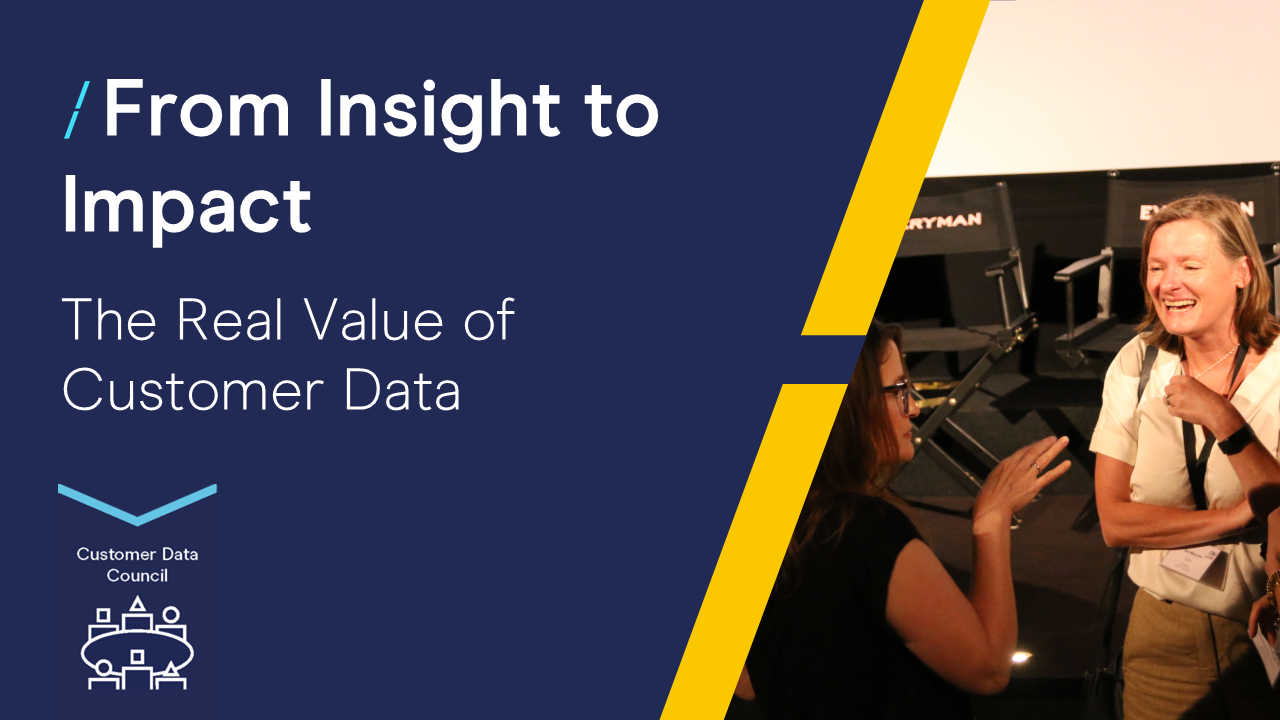Genetically re-engineering the sales funnel
07 Feb 2018

Ever joined a company to find that marketing is so undervalued that leads are classified as business cards, and these are passed straight through to sales? The marketing infrastructure is non-existent and all of this has driven a ‘them-and-us wedge’ between marketing and sales because your sales colleagues cannot see any value – they could do this themselves!
Less likely today with the propensity of CRM systems, automation and social tools that are in the market. But there is more to the marketing infrastructure than the tools that are available to you. You need to define the funnel and its economics, design processes and workflow, agree lead handover contracts with sales as well as measurement, reporting and feedback loops — and enable continuous improvement. Focus on getting good data into your CRM — good in, good out.
Systems such as Salesforce.com (SFDC) are great if thought is given to the elements above: and the processes and workflow within it are designed with thought. However, SFDC is so customizable and flexible that if you get this wrong then you are back to the issues referenced above — and this in turn reflects negatively on the SFDC brand. Most people blame the tools and not their design.
When starting this process engage sales [at all levels – not just management] in the development of the processes, workflow and elements that define the marketing side of the funnel. If your sales colleagues have been involved in the specification then they will believe in it: confidence, trust, respect! Treat sales as internal customers, understand their needs and requirements.
When you define your funnel and label the buckets, think about the flow through the funnel and what you need to measure and report on, especially in terms of the return on the marketing investment. Give consideration to [budget] wastage and how you cut that back to zero, or as close to zero as possible.
The Funnel
Here is a funnel diagram with some associated labels:

What the labels mean:
Target audience: contacts — business, media, analysts, suppliers, Etc. Could be new or existing contacts with prospective or existing customers. Business cards and contact information. At this stage you might know very little about the contact or their requirements for their business.
Engagements: contacts who engage with your brand. They have taken an action that suggest they may have an interest in your products or services — e.g., visited your stand at an exhibition, downloaded a document such as a white paper or attended a webinar, Etc.
Engagements can be driven by in-bound or out-bound marketing activities. Often out-bound activities connect to in-bound engagements over time.
Profile: this is the profile of your target audience: companies and/or contacts — there are many ways to specify/define profiles — you have to decide what is right for your business in terms of demographics, deal size, product/service fit, markets and sectors, Etc. Filtering can be automated in the CRM but there can be and are exceptions so build the handling of these into process and workflow definitions.
Marketing nurture: not yet ready for sales engagement and qualification. Accounts and contacts are the responsibility of the marketing team. Can require multiple [brand] engagements before the contact is ready to engage in a discussion regarding an opportunity.
Marketing Qualified Lead (MQL): Ready for sales engagement and qualification. Again, involve sales leadership and colleagues when specifying the qualification criteria that defines when a lead is qualified and ready for acceptance by sales.
Lead source – (don’t confuse this with campaign source):
- Marketing Generated Lead (MGL): initial and/or influenced engagement driven by the application of the marketing budget. This includes Marketing Development Funds (MDF) and Co-Marketing Funds (CMF) accrued and/or committed by business partners and/or suppliers. This doesn’t mean that a marketer has generated the engagement. MGLs can be produced by sales personnel. This is a measure of the investment of the marketing budget.
- Partner Generated Lead (PGL): These are MQLs that are produced and provided by business partners or suppliers. They require no direct resource or budgetary investment and this includes MDF and CMF.
- Sales Generated Lead (SGL): These are MQLs that are produced directly by the sales representative with no budgetary investment, (this includes MDF and CMF). For example, working personal networks, e-shots…
If the marketing plan is efficient and effective then there should be no reliance on SGLs – although they may still be produced.
Sales Accepted Lead (SAL): This is a handshake (contract) between marketing and sales. By accepting the lead the sales colleague is taking ownership – indicating that they have time to sales-qualify the lead designed to minimise wastage. Sales can pass back for reallocation if they do not have the time to follow-up and sales qualify. Alerts can be set and triggered if the sales colleague has not acted and followed up in a pre-agreed time. Sales acceptance is not an indication of the quality of the lead.
Sales qualification: Qualification by sales of the MQL. All communications, including attempts, should be recorded against the record in the CRM. When the sales colleague establishes contact then the MQL should be converted to contact.
When an opportunity has been identified/confirmed then the record should be converted to an opportunity in accordance with the company’s sales process.
If an opportunity is not identified or a previously identified opportunity needs to be downgraded then the sales colleague (discretionary) can pass back to marketing nurture to facilitate further engagement and to avoid wastage.
Sales Qualified Lead (SQL): In profile opportunity. Bid decision (where appropriate). If there is a no bid decision then the Account/Contact(s) can be passed back to Marketing Nurture (discretionary) to maintain communications and avoid wastage.
Bid: And where appropriate Final Negotiation process. If the bid does not proceed or the Final Negotiation is not successful then the Account/Contact(s) can be passed back to Marketing Nurture (discretionary) to maintain communications and avoid wastage.
Win/Loss: If the bid is lost then the Account/Contact(s) can be passed back to Marketing Nurture (discretionary) to maintain communications and avoid wastage. If the bid is successful then the new customer is passed through to the Account Management process.


1.png)


Please login to comment.
Comments